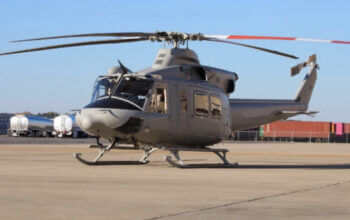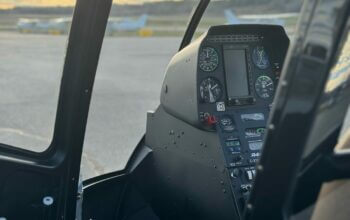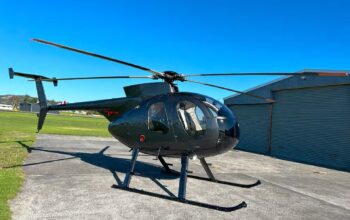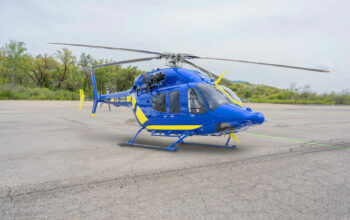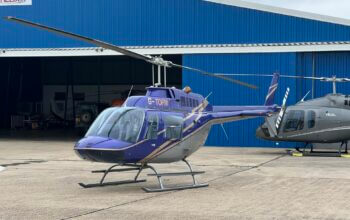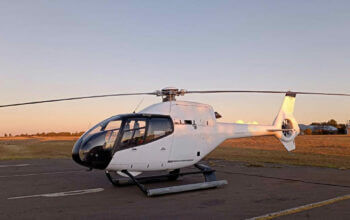Estimated reading time 7 minutes, 39 seconds.
Human factors may have been the cause of an accident at Andersen Air Force Base (AFB) in Guam between a CC-150 Polaris and a French Air Force A400M at the end of Exercise Mobility Guardian.
The Polaris, 150003, a strategic transport aircraft, had landed the day before, on July 21, to bring back equipment and personnel participating in the two-week multinational training event. The crew had flown from 8 Wing Trenton, Ont., through Hickam AFB in Hawaii, before touching down in Guam just before 21:45 local time.
The aircraft was parked in spot N24 by military ground crew involved in Ex Mobility Guardian, and was then loaded with equipment and baggage. According to a preliminary report by the Department of National Defence (DND) Airworthiness Investigative Authority, “the aircraft was partially secured (without chocks)” for the night.
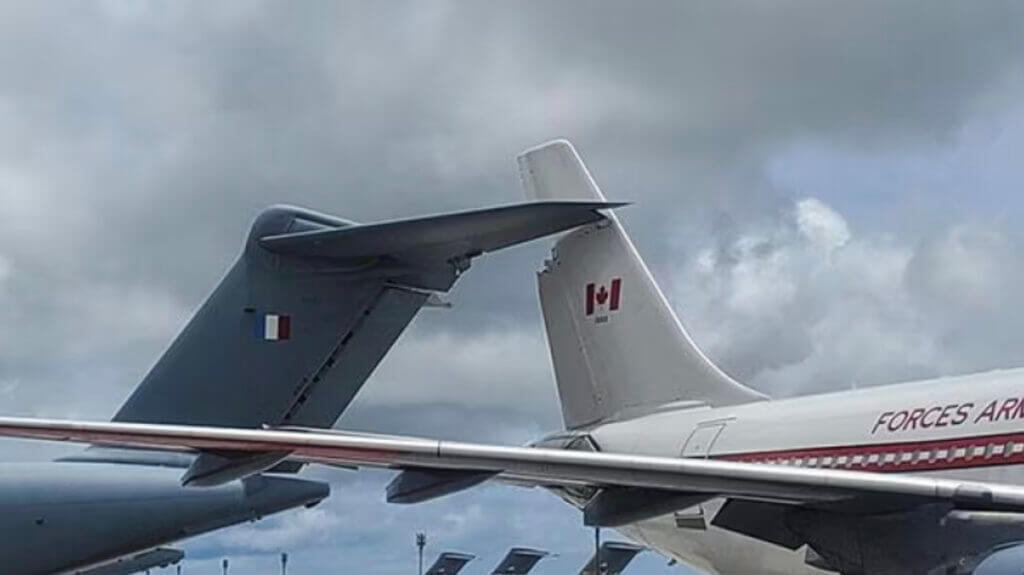
“At approximately 10:30 local the following morning, the aircraft began to roll backwards, nose veering to the left, and continued to roll until the right horizontal and vertical stabilizer contacted the empennage of a French Air Force A400M parked on spot N22. Following contact, the CC-150 rebounded forward coming to rest approximately eight metres from the point of impact,” the investigator found.
Both the Canadian and French aircraft “sustained serious damage,” according to the report, but no personnel were injured.
Since there was no evidence of technical issues with the CC-150, the investigation is now focused on “procedures, communications, and human factors.”
The Polaris remains in Guam and the Air Force is assessing whether the aircraft can be repaired or should be retired.
“As of now, the course of action for the aircraft in question is still being determined,” a DND spokesperson stated.
Exercise Mobility Guardian is a biennial training event hosted by the U.S. Air Force Air Mobility Command. Normally a North American exercise for U.S. and Canadian aircrews, in 2023 it was expanded to a multinational event for all the Five Eyes partners: Australia, New Zealand, and the United Kingdom, as well as France and Japan. Set in a scenario stretching across the Indo-Pacific, participants conducted air mobility training in support of other regional exercises, including transport and air drops, air-to-air refuelling, and aeromedical evacuation.
The Canadian Air Task Force included a tactical airlift detachment of two CC-130J Hercules and an air-to-air refuelling detachment of one CC-150T Polaris tanker, as well as the respective aircrews, operations personnel, and maintenance teams from 436 Transport Squadron and 437 Transport Squadron. It also contained an aeromedical evacuation team, an Expeditionary Air Traffic Management team from 8 Air Communications and Control Squadron, and a Mobile Air Movements Section.
The Royal Canadian Air Force (RCAF) is currently in the process of replacing the CC-150 Polaris fleet with nine Airbus A330-200 Multi Role Tanker Transport (MRTT) aircraft. The Canadian government on July 25 awarded a contract of about $3.6 billion to Airbus Defence and Space for the purchase of four new Airbus-built A330 MRTTs and the conversion of five used A330-200s to the MRTT configuration.
While the five CC-150 aircraft have a service life expectancy to 2027, some of the fleet may need to be replaced sooner. A CC-150 transporting Prime Minister Justin Trudeau and delegates to and from a G20 summit in India this week remains on the ground following the detection of a faulty part during the preflight check. A replacement part is being flown commercially to India by an Air Force technician.
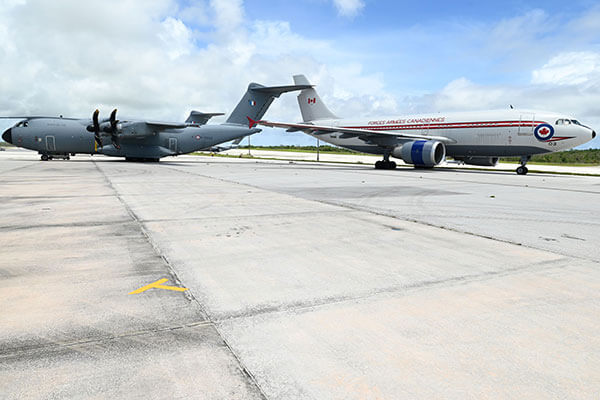
In October 2019, a CC-150 rolled into a hangar wall 8 Wing Trenton while being towed. The “structural damage to the nose and right engine cowling” was significant and the plane was out of service for 16 months.
Consequently, the Strategic Tanker Transport Capability (STTC) project has taken on some urgency.
The government acquired two A330-200 planes in July 2022 for US$102 million and then three more in July 2023 for US$150 million. The aircraft were all previously operated by Kuwait Airways and acquired through International AirFinance Corporation.
“The procurement of used aircraft for this capability is a viable option given that military rates of annual flight hour consumption are typically less than commercial rates,” the government stated. “Thus, a used commercial aircraft that has a modest number of hours flown on it can still achieve a full military service life of 30 years.”
The five used A330-200 aircraft will receive a “limited retrofit” to bring them to the standard of a new A300-200, and will be powered by the same Rolls-Royce Trent 700 engines as the four additional Airbus-built aircraft.
Eight of the nine aircraft, to be called the CC-330 Husky, will adopt operational grey livery and be converted to the full MRTT mission suite of troop and cargo transport, aeromedical evacuation, and air-to-air refuelling – with both boom and hose and drogue systems.
However, the first one, 330002, which landed at Ottawa International Airport on Aug. 31, is painted in the white Canadian government livery and will be assigned secure transport of government officials.
